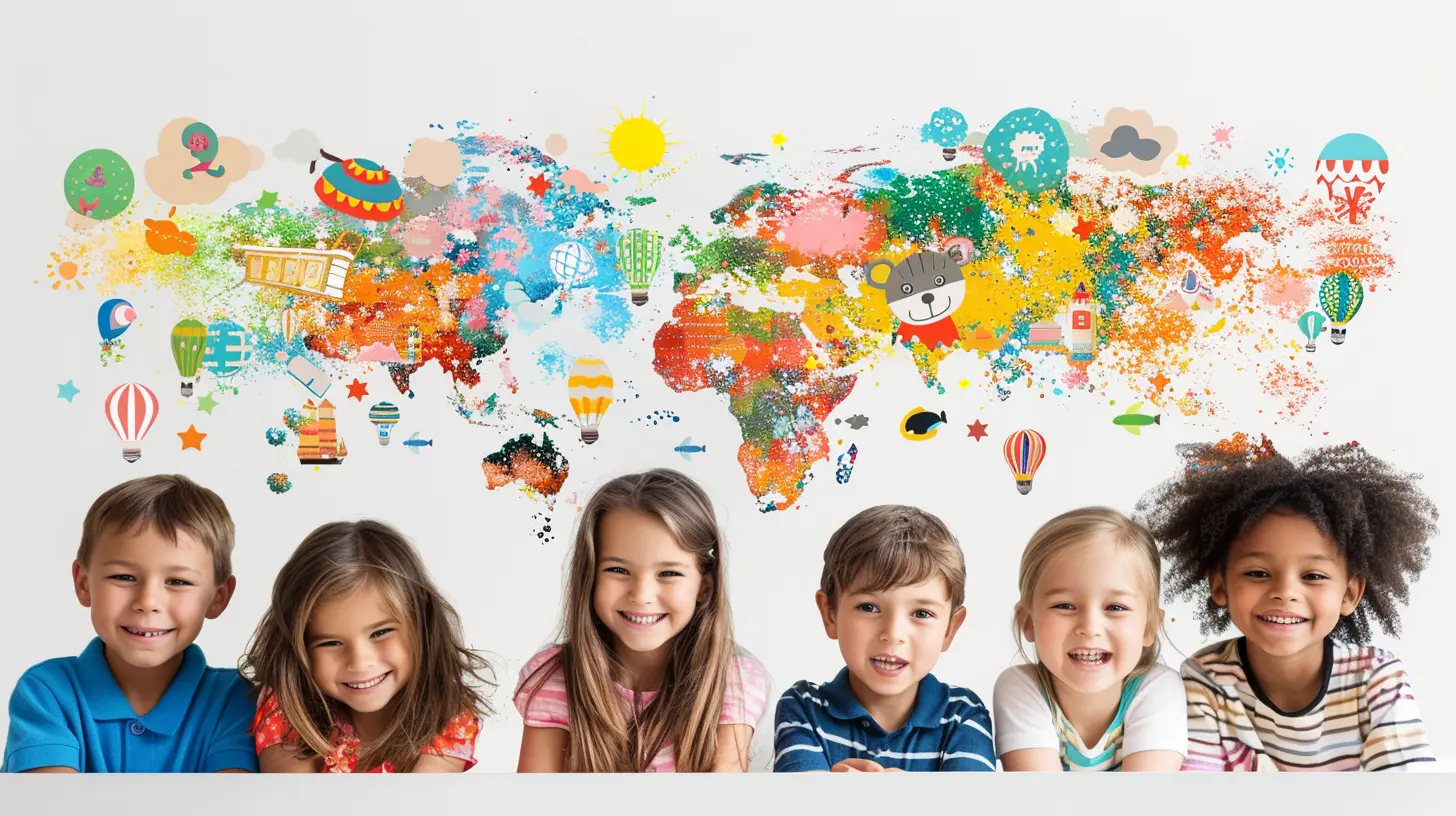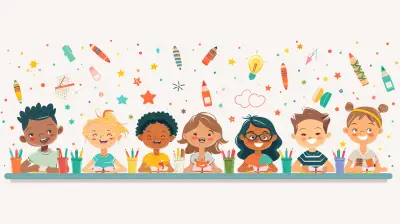How to Create a Language-Rich Environment for Second Language Learners
1 September 2025
Language is the key to unlocking the world. For second language learners, mastering a new language is more than just understanding grammar rules and vocabulary—it’s about immersing themselves in a space where language thrives naturally. So, how can educators, parents, and caregivers create an environment that supports and accelerates second language learning?
In this article, we’ll dive into practical, easy-to-implement strategies to build a language-rich environment that nurtures communication skills, sparks curiosity, and helps learners thrive. Whether you're a teacher in a classroom or a parent at home, these tips are for you.
What’s a Language-Rich Environment, Anyway?
Let’s break it down—a language-rich environment is one where communication is constant, encouraged, and meaningful. Think of it as a garden of words. The more you plant (speak, read, write), the more it grows. It’s not just about talking all the time, though. It’s about creating multiple pathways for learners to absorb and use language—visuals, conversations, books, labels, even music.This kind of setting is golden for second language learners because it gives them constant exposure in authentic contexts. They’re not just memorizing; they’re experiencing the language.
Why Is It So Important for Second Language Learners?
Imagine moving to a new country and not knowing how to ask for water or tell someone your name. Frustrating, right?That’s what many second language learners face. A language-rich environment helps ease that frustration by:
- Boosting confidence and motivation
- Expanding vocabulary naturally
- Reinforcing grammar and sentence structure
- Encouraging meaningful social interactions
- Helping with listening and comprehension skills
Whether the learner is 5 or 55, immersion in a supportive and word-filled space makes a massive difference.
Start with a Welcoming Atmosphere
Before jumping into the tools and strategies, let’s talk about vibes. Yep, vibes matter.A language-rich environment begins with a positive, inclusive setting. Learners need to feel safe and supported. If they’re afraid of making mistakes or being judged, they’ll hold back. And we don’t want that.
Encourage risk-taking with language, celebrate progress (not just perfection), and be patient. Remember, silence sometimes means the learner is processing. Give them time.
Label Everything (Seriously, Everything!)
One of the simplest yet most powerful tools? Labels.Words are everywhere—so why not make use of them? Labeling classroom objects, household items, and common areas with their names in both the native and target language makes learning unavoidable... in a good way!
For example:
- Door – Puerta
- Chair – Silla
- Window – Ventana
This constant visual input reinforces vocabulary. Over time, learners start connecting the dots without even realizing it.
Surround Them with Books
Books are language goldmines. If you're not already stocking up your shelves, now’s the time.But not just any books—choose ones that are:
- Age-appropriate
- Culturally relevant
- At the learner’s language level (or just a tad higher for challenge)
- Rich in illustrations (for context clues)
Reading aloud is a powerful tool, too. It models pronunciation, intonation, and fluent reading. Don’t worry if you feel silly—read with expression, use voices, and make it fun.
You can also encourage learners to “read the pictures” and tell their own version of the story. This sparks interaction and builds confidence.
Use Visuals Everywhere
Language can be hard enough. Let’s not make it harder.Visual aids are a second language learner’s best friend. Use pictures, charts, icons, infographics—anything that paints the word’s meaning without needing a lengthy explanation. It bridges comprehension gaps and helps learners connect verbal language with images.
Here are a few ideas:
- Picture schedules
- Flashcards with images
- Anchor charts with illustrations
- Storyboards
When language is paired with imagery, understanding skyrockets.
Encourage Conversations—Not Just Correct Sentences
This is a big one. Language learning isn’t about perfection—it’s about communication.Create as many opportunities as possible for authentic conversation. Ask open-ended questions like, “What did you like about that story?” instead of “Did you like that story?”
Be patient. Give wait time. Sometimes it takes learners a few extra seconds to process and respond. That’s totally normal.
And here’s a secret: it’s okay to let go of grammar sometimes. Let learners speak freely, even if it’s not perfect. Correction can come later. Right now, it’s about confidence and flow.
Implement Interactive and Collaborative Learning
Learning is more powerful when it’s social.Pair learners up for role-plays, group projects, or peer interviews. Use games that involve speaking and listening, like charades or Pictionary. Not only does this make learning fun, but it also lowers stress and boosts motivation.
Language buddies are awesome, too. Pair a more proficient speaker with a second language learner. They help each other grow, and everyone wins.
Incorporate Songs, Rhymes, and Chants
Music isn't just entertainment—it’s a language-learning powerhouse.Ever wonder why you can remember song lyrics from 10 years ago but forget what you ate last night? That’s the magic of rhythm and melody. They help words stick.
Use simple songs, rhymes, and chants that match the learner’s level. Include actions or visuals to reinforce understanding. Bonus: it makes the classroom (or living room) a lot more lively!
Use Technology Wisely
We live in a digital world, and yes, technology can be an ally in building a language-rich environment.Apps, language games, podcasts, videos, and digital flashcards can be engaging tools. Just make sure they’re interactive and not just passive screen time.
Some learner-approved platforms include:
- Duolingo
- Quizlet
- BBC Learning English
- StoryJumper
- Kahoot
But remember, it’s a supplement, not a substitute. The human connection matters most.
Promote Writing (Even If It's Imperfect!)
Don’t shy away from writing activities! Encourage journaling, writing letters, creating comic strips, or even texting in the second language.Keep it low-pressure. The goal isn’t a perfectly crafted paragraph—it’s expression and practice.
Sentence starters, word banks, and visuals can be super helpful here. And celebrate their efforts! Even a short sentence is a big win.
Value the First Language
Here’s something people often forget: respecting a learner’s first language actually boosts second language acquisition.How? Because it validates their identity. It encourages metalinguistic awareness (basically, understanding how languages work). And it creates bridges between what they know and what they’re learning.
So, feel free to let learners use their first language to brainstorm ideas, clarify concepts, or relate to new vocabulary. It’s not a crutch—it’s a stepping-stone.
Consistency Is Key
Creating a language-rich environment isn’t a one-time setup. It’s an ongoing effort. But the good news? Small, consistent actions build huge results over time.Stay consistent with:
- Daily reading
- Using labels
- Encouraging conversations
- Adding visuals
- Playing with language
Think of it as watering a plant. It might not bloom overnight, but with steady care, it will flourish.
Don’t Forget to Celebrate Progress
Language learning is a journey—definitely not a race. Celebrate every little win. Did your learner write a full sentence? That’s huge! Did they try a new word? Awesome!Positive reinforcement fuels motivation. So be generous with praise, give high-fives, and maybe even create a “language superstar” wall to showcase achievements.
We all grow faster in encouragement-rich environments.
Final Thoughts
Building a language-rich environment for second language learners doesn’t require fancy tools or complicated plans. It’s about being intentional—filling your space with words, sounds, visuals, and interactions that make language come alive.Whether you're creating this environment in a classroom, at home, or online, remember that it’s about connection, trust, and consistency. Keep it fun, keep it flexible, and most of all—keep it human.
So, grab some labels, dust off those books, turn up the music, and start creating a space where language isn’t just taught—it’s lived.
all images in this post were generated using AI tools
Category:
Second Language AcquisitionAuthor:

Anita Harmon
Discussion
rate this article
1 comments
Khloe McKinnon
Great tips! Fostering a language-rich environment truly enhances learning outcomes!
September 22, 2025 at 3:45 AM


